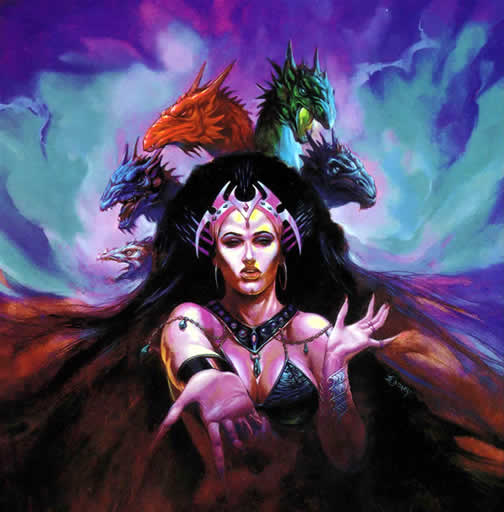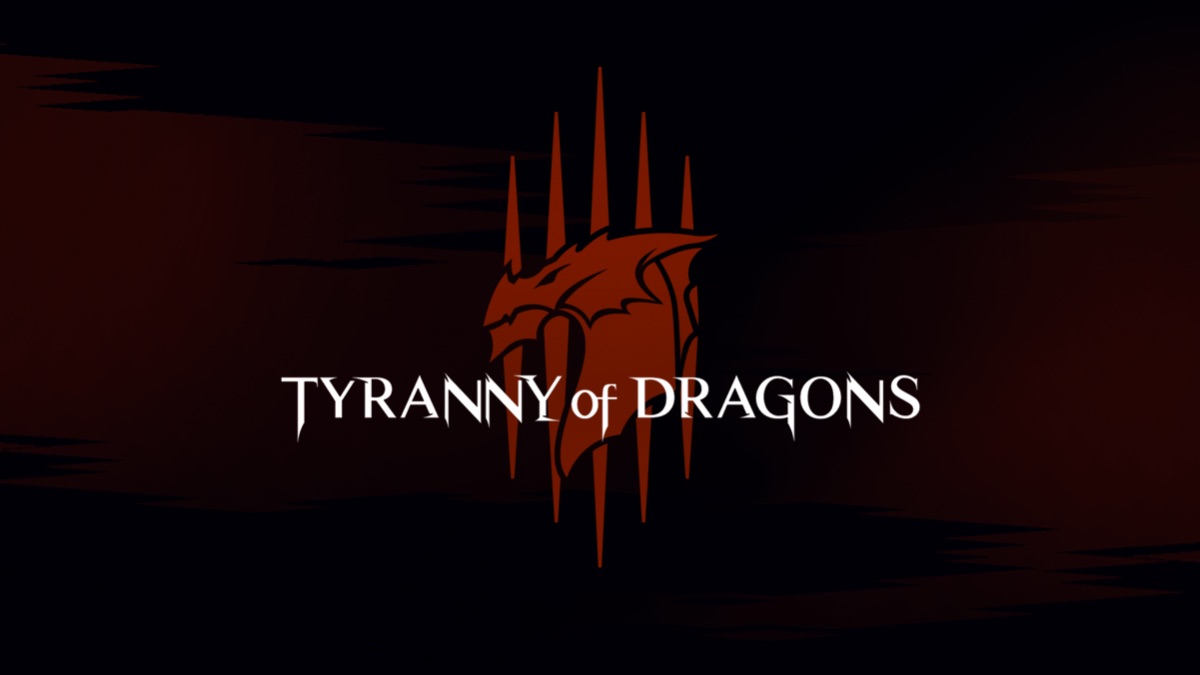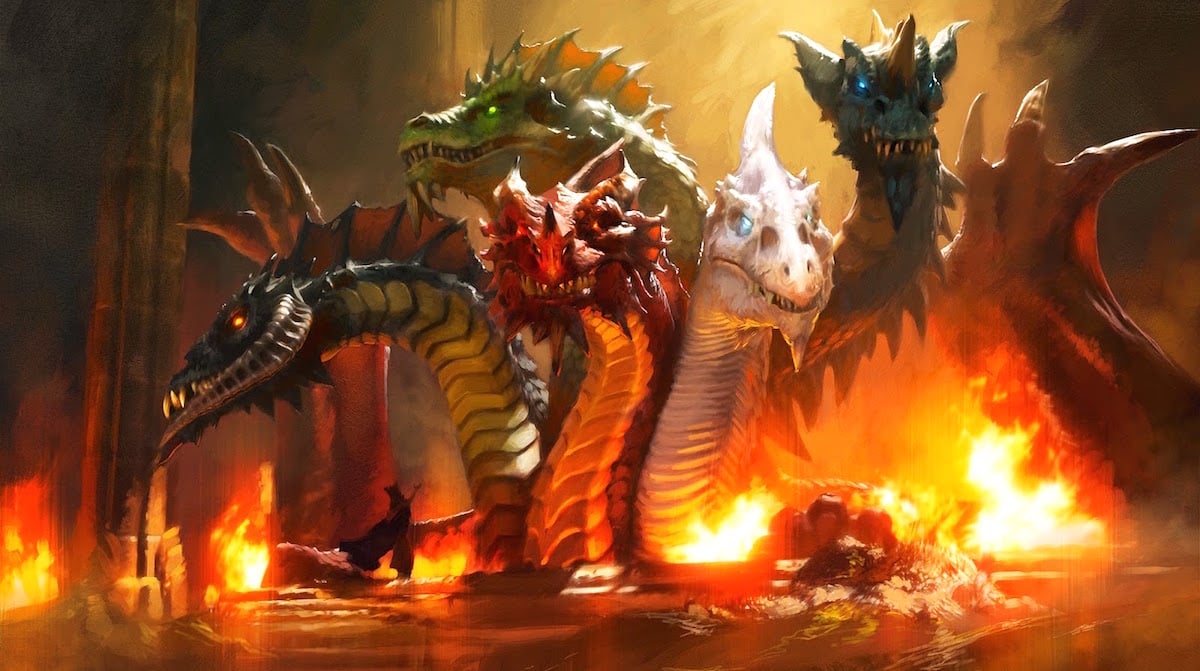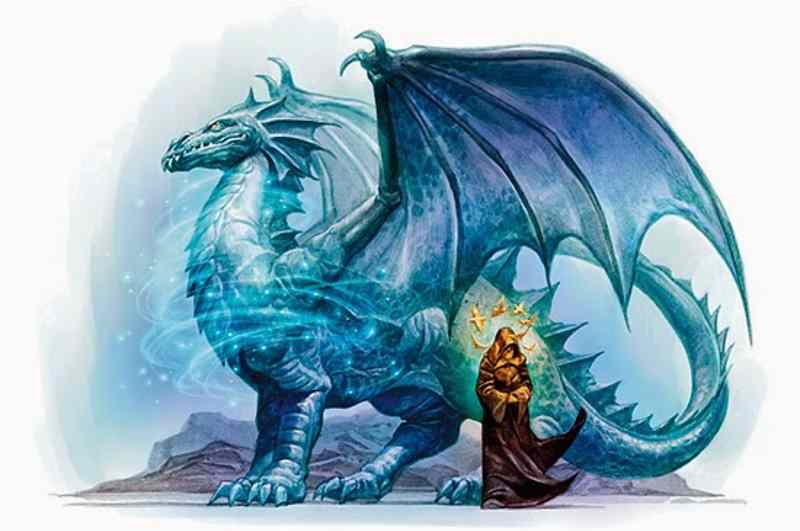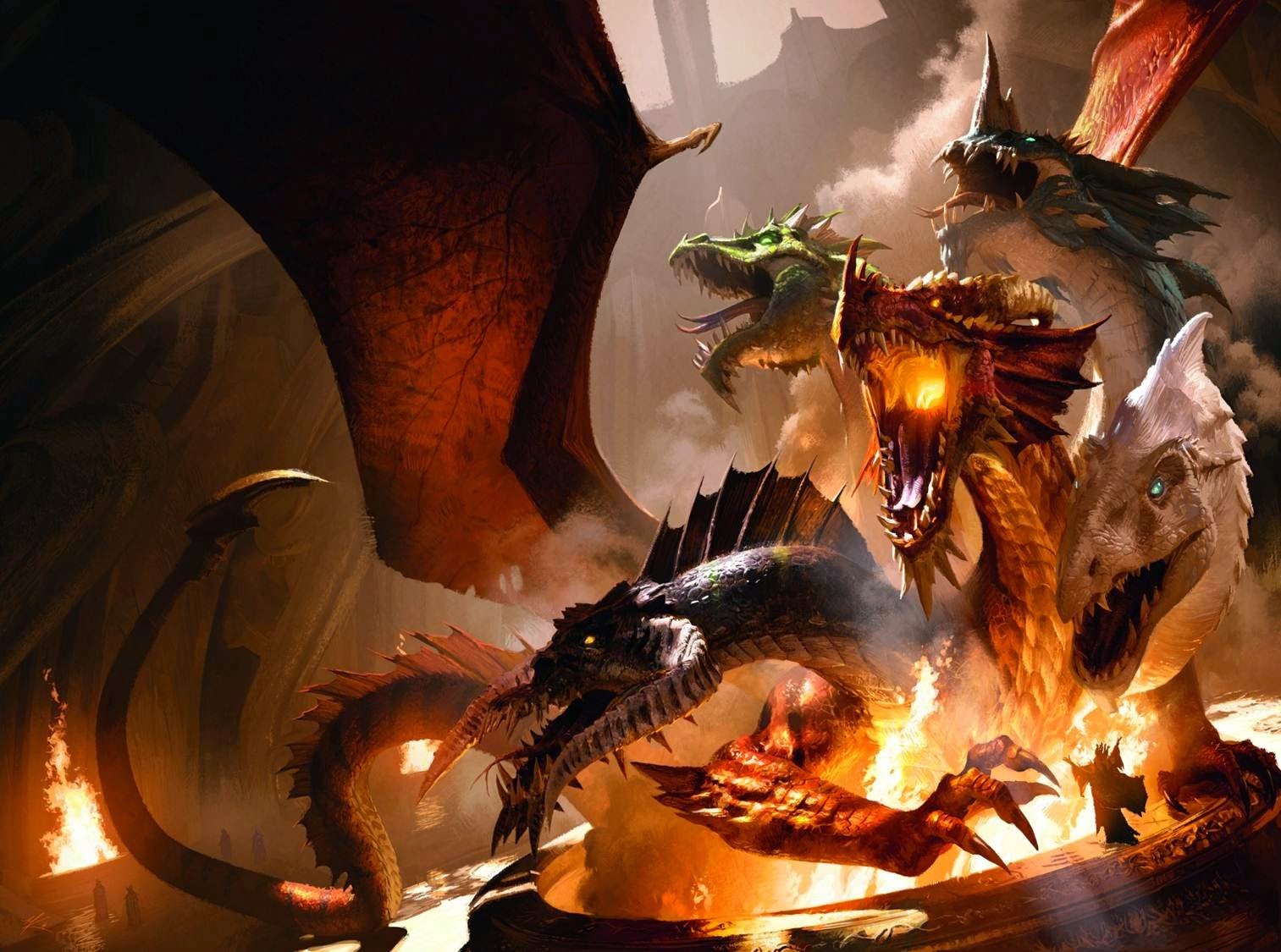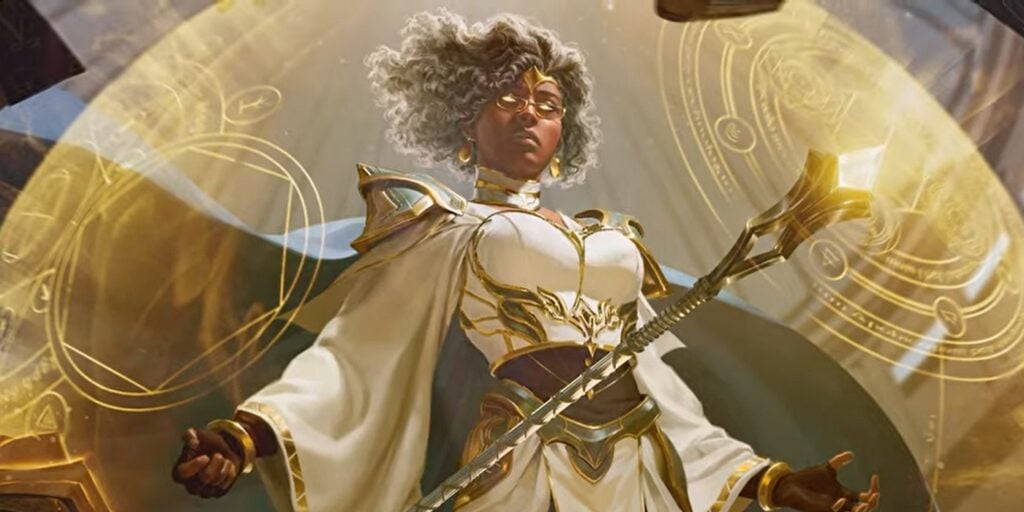D&D: An Adventurer’s Guide To Tiamat
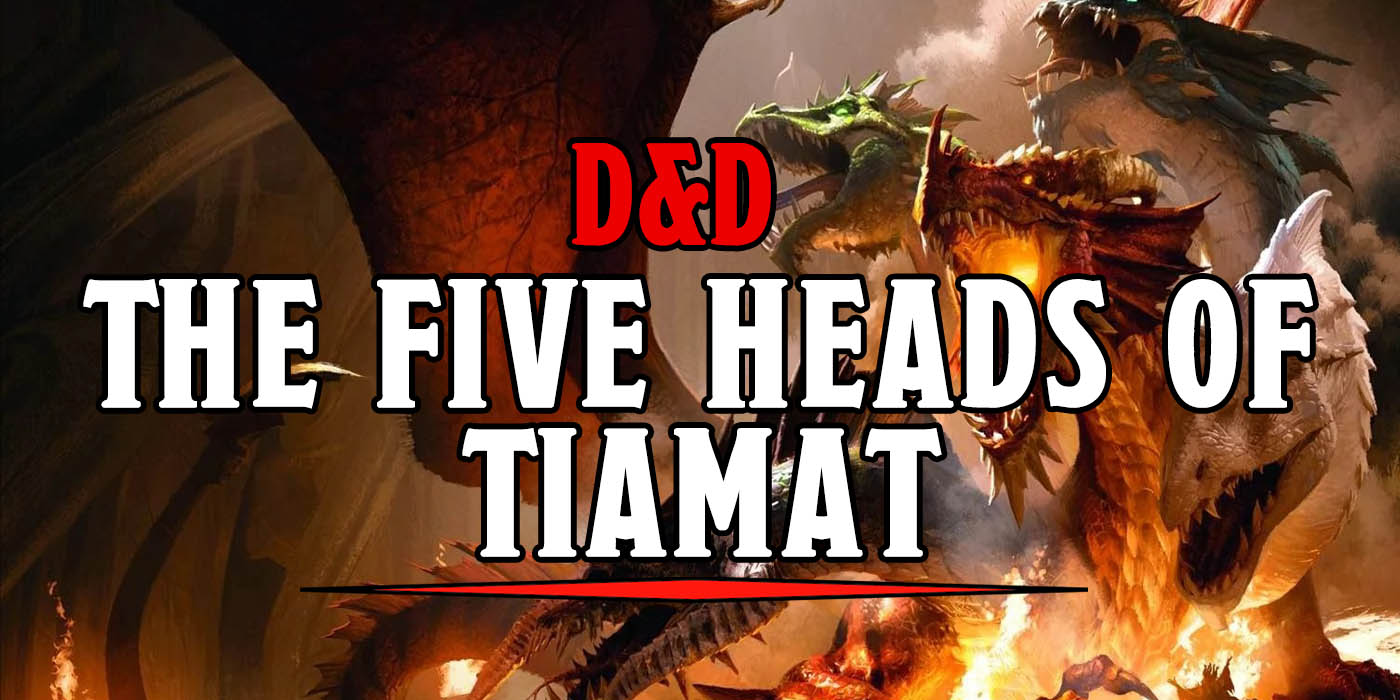
The time has come to look at one of the most ferocious dragons of them all… the five-headed Tiamat.
Tiamat is the five-headed goddess of all dragons. She created the dragons. And embodies each of the chromatic dragons. Tiamat even has her own network of agents, spies, and cultists. Tiamat is also trapped in Avernus, the topmost layer of the Nine Hells. She has no massive temples. No monuments. Not even ruins dedicated to her tyranny. There are no scars upon the earth to testify her terrifying majesty. Her presence in the mortal world skulks in the shadows.
Tiamat embodies everything that is draconic, for better and worse. She’s vain, proud, arrogant, and deservedly so. Some little irony then, that on the cosmological scale of things, she’s relegated to a part of someone else’s divine realm. She’s in the Nine Hells, trapped on the layer of Avernus, ruled over by Zariel (or possibly someone else, depending on what you choose). Dragons, even the good ones, aren’t known for their generosity and willingness to give up what’s theirs by right.
Why does this incredibly powerful deity not have more of a presence in the mortal world? Why aren’t there kingdoms dedicated to her? Even Bahamut, the noblest of all dragons doesn’t have a temple dedicated to him. What gives?
If you played through the Tyranny of the Dragons Campaign, you got to see how Tiamat even got hold of her cult of the dragons in the first place. They were a secretive order that was all about raising dragons as Dracoliches. Then Tiamat’s agents showed up. Now she has these followers, but they got adventurer’d, so who knows what they’re up to.
But the fact is, that feels right for these draconic gods. Something about them feels like they should be these secretive things. It might be hard to imagine temples of Bahamut cropping up in every major city. But a lone, fortified temple to Bahamut in a remote, forbidding part of the world? Absolutely.
Same goes for secretive orders. On either side! Secret orders of knights or inquisitors or whomever that don’t quite fit in with the rest of mortal society are prime candidates for dragon servants.
Paladins of Bahamut, Archpriests of Tiamat–these feel more like individuals than part of society. I think a big part of that is the way dragons interact with each other. Dragons don’t, usually, gather in big parliaments. They’re solitary, powerful individuals who shape the landscape around them if they live long enough–but they also become more remote…more mythic.
That’s how it seems with the two dragon deities. There are still a lot of “why are these things the way they are” type questions being asked and perhaps one day, we’ll all get to find out. Until then, we’re just going to have to keep hunting down those Dragon Hoards.
In the meantime, remember, always meddle in the affairs of dragons. Just be sure and apply this handy seasoning packet before you do.

